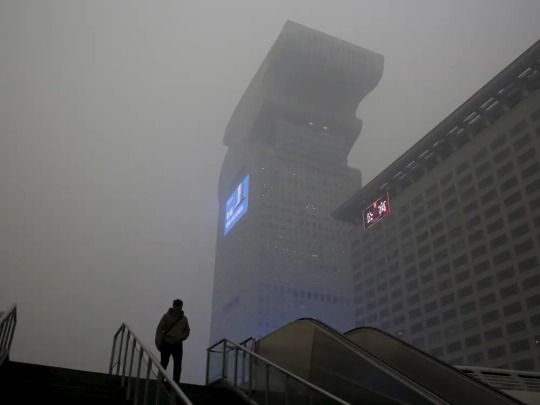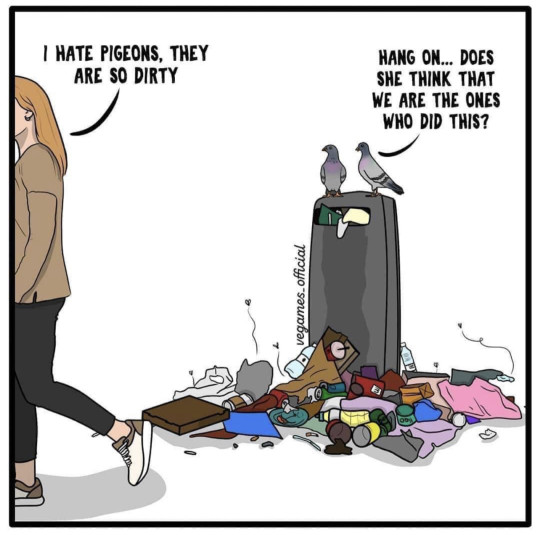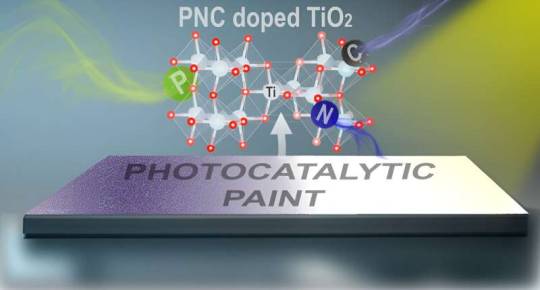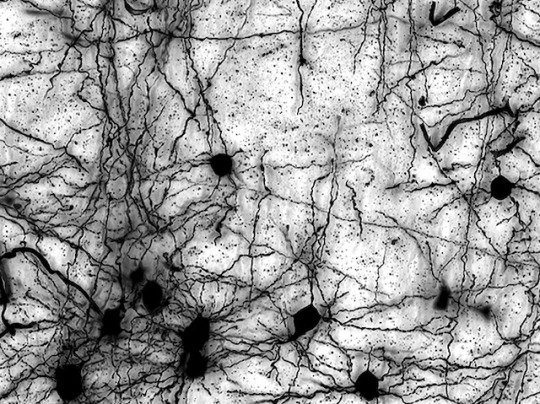#pollutants
Text







In 2015 air pollution levels in Beijing were so intense, China received its first ever red alert. The smoggy conditions made buildings with LED screens look like they had futuristic holograms.
#interesting#interesting facts#nature is everything#nature is weird#nature#thats interesting#thats incredible#thats insane#discover#made in china#pollution#china#china news#pollutants#smog#smoggy#buildings#blade runner#bladerunner#future#futuristic#dystopian#but woah#woah woah woah#woah dude#like woah#crazy facts#wtf facts#true facts#woah
116 notes
·
View notes
Text

#comics#comic#cartoons#cartoon#humans#pigeon#pigeons#pollution#pollutants#polluted water#polluted air#rubbish#ecology#ausgov#politas#auspol#tasgov#taspol#australia#fuck neoliberals#neoliberal capitalism#anthony albanese#albanese government#environmentalism#environmental activism#environmental#environment#enviroment art#environmetalists#enviromental
59 notes
·
View notes
Text

Catalysis breakthrough yields self-cleaning wall paint that breaks down air pollutants when exposed to sunlight
Typically, beautiful white wall paint does not stay beautiful and white forever. Often, substances from the air accumulate on its surface. This can be a desired effect because it makes the air cleaner for a while—but over time, the color changes and needs to be renewed.
A research team from TU Wien and the Università Politecnica delle Marche (Italy) has now succeeded in developing special titanium oxide nanoparticles that can be added to ordinary, commercially available wall paint to establish self-cleaning power: The nanoparticles are photocatalytically active, they can use sunlight not only to bind substances from the air, but also to decompose them afterwards.
The wall makes the air cleaner—and cleans itself at the same time. Waste was used as the raw material for the new wall paint: metal scrap, which would otherwise have to be discarded, and dried fallen leaves. The study is published in ACS Catalysis.
Read more.
#Materials Science#Science#Catalysts#Paint#Self cleaning#Pollutants#TU Wien#Nanoparticles#Nanotechnology#Titanium dioxide
18 notes
·
View notes
Text

SOLUSI LARI DARI POLUSI
Judulnya nampak berbobot, padahal isinya... tentu tidak.
Semenjak ramai sekali berita tentang buruknya polusi di Jakarta & sekitarnya, tadi pagi pas lagi nemenin Umar naik sepeda, disempatkan menatap langit lebih seksama dari biasanya. Alhamdulillah masih biru, walaupun sebagain lainnya berkabut, gunung (entah apa) yang biasanya nampak, ga nampak pulak tadi. Mengutip kata favoritenya Umar belakangan ini, "oh my god", ternyata nyata adanya polusi udara seburuk ini. Tapi, tahukan kita? Bahwa kendaraan menyumbang 30% dari total polusi di Jakarta, selebihnya PLTU dan sisanya yang lain-lain. Ini fyi ajasi. Tentu, tidak ada solusi praktikal untuk info diatas, dari saya. Ntar lah, kalau ada kesempatan jadi caleg partai, baru dipikirin solusinya😌 hehe.
Ohya, tadi setelah mengamati langit, ku wa lah suami. Bilang, sedih juga sama polusi ini. Suamiku sungguh sangat visioner, dia balas, "nanti kita beli rumah aja di Bandung, daerah Setiabudi/Ledeng". Mantap kali kan? Solusi yang diberi tidak tanggung-tanggung. Yaa, tapi setelah dipikir, Bandung kota juga mungkin akan makin padat kedepannya, jadi gimana kalau kita cari di Ciparay/Cililin aja? Tapi itu, jauh entah antah, gimana pulak kalau tiba-tiba ingin jajan di Gempol? Hm. Apa daerah Cigugur Girang/ Gerlong aja kalau gitu? Aamiin aja dulu dari sekarang.
Jadi, solusi lari dari polusi nih, nampaknya kita hijrah tempat tinggal aja gitu ya? Jadi, bagus dong agenda pemerintah sekarang ini yang mau pindah ke IKN? Mantap. Jaya selalu Pakde dan Pak Luhut👍 lah.... wkwk.
Yaudahlah, mana sini yang punya info rumah dijual di Bandung kota agak minggir dikit, yang daerahnya ga macet, masih hijau, masih ada sejuk dingin-dingin enak, fasum lengkap, tapi harga dibawah 600an🙃 hehe. Sungguh banyak ingin, minim modal. Seperti para caleg politik yang balihonya membuat mata perih👌
Jadi, solusi tercepat dan termurah untuk saat ini adalah: Yuk, kita beli air purifier! Selamatkan udara di dalam rumah dulu, seengganya kan. Apa ini sudah waktunya, ngeshare link shopee?😌
4 notes
·
View notes
Text
New year New goals for healthy living
As the calendar turns to a new year, it's the perfect time to reflect on our habits and set intentions for a healthier lifestyle. The beginning of a new year often brings with it a sense of renewal and the opportunity for positive change.
Let's embark on this journey together, focusing on achievable goals that will promote overall well-being.
1. Prioritize Nutritious Choices:
Start by reassessing your dietary habits. Instead of restrictive diets, aim for a balanced approach. Incorporate more fruits, vegetables, and whole grains into your meals. Consider exploring new recipes and experimenting with healthier cooking methods. Small changes can lead to big improvements in your overall nutrition.
2.Stay Active, Find Joy in Movement:
Physical activity is a cornerstone of a healthy lifestyle. Rather than setting lofty fitness goals, focus on activities you genuinely enjoy. Whether it's a daily walk, yoga, or dancing in your living room, find joy in movement. Consistency is key, so choose activities that align with your interests to make exercise a sustainable part of your routine.
3. Prioritize Mental Well-being:
A holistic approach to health includes caring for your mental well-being. Incorporate stress-relieving practices into your daily life, such as mindfulness meditation, deep breathing exercises, or spending time in nature. Make self-care a priority, recognizing that a healthy mind is essential for overall vitality.
4.Adequate Sleep for Renewal:
Quality sleep is often underestimated but plays a crucial role in our overall health. Establish a consistent sleep routine by going to bed and waking up at the same time each day. Create a restful environment by minimizing screen time before bedtime and maintaining a comfortable sleep environment. A well-rested body is better equipped to face the challenges of the day.
5. Hydration for Vitality:
Simple yet impactful, staying adequately hydrated is a goal that pays dividends for your health. Carry a water bottle with you throughout the day as a reminder to drink water regularly. Hydration supports various bodily functions, including digestion, skin health, and overall vitality.
6.Connect and Cultivate Relationships:
Healthy living extends beyond physical well-being; it includes nurturing meaningful connections. Strengthen existing relationships and seek opportunities to connect with others. Social support is a powerful motivator and contributes to overall mental and emotional health.
Avata, with its innovative features and benefits, can seamlessly complement your journey towards a healthier and happier life.
1. Breathe Cleaner Air, Live Healthier:
Avata's advanced technology ensures the air you breathe is of the highest quality. By reducing the occurrence of respiratory infections and eliminating 99.9% of microorganisms, Avata creates an environment conducive to better health. Clean air is a fundamental pillar of overall well-being, especially in the face of increasing pollution levels.
2. Improved Sleep Quality:
Quality sleep is a cornerstone of good health, and Avata contributes to creating an optimal sleep environment. By removing pollutants and providing a clean air atmosphere, Avata enhances the conditions for restful sleep. Experience nights of rejuvenating sleep, waking up refreshed and ready to tackle the day ahead.
3. Trusted by Healthcare Professionals:
Avata is not just a home appliance; it's a solution trusted by doctors and hospitals. Its efficacy in maintaining clean and healthy air has garnered the trust of healthcare professionals. By bringing Avata into your living space, you embrace a level of air quality endorsed by those committed to the well-being of others.
4. Guard Against Premature Aging:
In the battle against environmental aggressors like pollution, Avata becomes your ally. By reducing the impact of external stressors on your skin, Avata contributes to the prevention of premature aging. Make a proactive choice for your skin's health and vitality.
5. Amazon Availability for Convenient Purchase:
Avata is readily available on Amazon, making it accessible for those eager to kickstart their health journey. With just a few clicks, you can bring the power of clean air into your home, enhancing your living environment and well-being.
Conclusion
Embarking on a journey toward healthier living doesn't require drastic changes or extreme measures. By setting realistic and attainable goals, you pave the way for lasting habits that contribute to your well-being. This new year, prioritize small, positive changes that align with your lifestyle and resonate with your values. Here's to a healthier, happier you in the coming year!
From breathing cleaner air to safeguarding against premature aging, Avata is more than a device—it's a commitment to your health and the well-being of your loved ones. Make 2023 the year you breathe, sleep, and live better with Avata by your side. Here's to a healthier, happier you!
Remember, the key is consistency and a gradual approach. Celebrate your successes along the way, and embrace the journey toward a healthier you. Cheers to new beginnings and a year filled with well-deserved self-care!
#air purification#health and wellness#air purifier for home#pollutants#airfreshener#aircleaner#air pollution
2 notes
·
View notes
Photo

Network Failure
October 2021 saw the biggest communications outage in history. Facebook went down. Although the disruption only lasted six hours, it caused worldwide chaos and cost Mark Zuckerberg $6 billion. Researchers have discovered that our brains experience similar network failures in response to bisphenol A. We’re exposed to this chemical every day – it’s in food packaging, shopping receipts, and medical equipment. Here, we see neurons (black) from mice exposed to bisphenol A for two months. Compared to untreated cells, the number of dendritic spines on these neurons decreased by 42%. These long thin structures allow neurons to talk to each other, and are vital for learning and memory. Mice exposed to bisphenol A suffered from anxiety and disrupted memory processing, and the scientists have uncovered how the chemical causes these changes to the brain’s network. This work explains how a ubiquitous chemical can disturb our brains, supporting efforts to regulate its use.
Written by Henry Stennett
Image from work by Sung-Ae Hyun, Moon Yi Ko & Sumi Jang, et al
Department of Advanced Toxicology Research, Korea Institute of Toxicology, KRICT, Daejeon, South Korea
Image originally published with a Creative Commons Attribution 4.0 International (CC BY 4.0)
Published in and on the cover of Disease Models & Mechanisms, July 2022
You can also follow BPoD on Instagram, Twitter and Facebook
15 notes
·
View notes
Text
Brown Rown looks forward to a day of play.
That large nose of his sure gets in the way.
A hanky danky is what he needs
to catch the kerchews he does sneeze.
Through a park and around a slide
he rides his bike with a map on his side.
Some trash is found along the way.
He picks it up throughout the day.
Brown Rown is a cute little guy who will teach your child to be mindful of the environment and pick up after themselves.

#tumblr#author#amazon#childrens book#childrens books#children books#author blog#reading#disney pixar#playchoices#mindful thoughts#being mindful#mindfulthinking#life lessons#litterbug#pollutants#polluters#pollution#polluted air
3 notes
·
View notes
Text
Bayer and Monsanto Settle with Oregon
Bayer and Monsanto Settle to Pay Oregon for PCB Pollutants
Bayer and Monsanto have settled a lawsuit with Oregon, agreeing to pay the state almost $700 million over PCB pollution allegations.
Polychlorinated biphenyls (PCBs) are toxic compounds formerly used in many applications, from coolants to copy machines and fluorescent light bulbs. Monstanto is the only company ever to manufacture PCBs in the United States, a factor which helped lead to their…

View On WordPress
6 notes
·
View notes
Photo

I'm stressed, depressed, and not well rested. That kinda rhymed... Idk, I'm tired...
Stop by my store for products based on this and other poems. JadeGemDesigns on Etsy.
#poem#my poem#my poems#original poems#poems and quotes#poems#poetry#poet#female poets#my poetry#original poety#my poety#original poetry#poetry blog#poetry by women#pollutants#polluted water#polluted air#polution#pollution#depressing poem#kinda depressing#tw depressing stuff#depressed#i'm just so tired#im so tired#i'm so fucking tired#mentally tired#im sad and tired#tired of life
5 notes
·
View notes
Quote
“We owe it to ourselves and to future generations to create better places and spaces for children to thrive. Mounting waste, harmful pollutants and exhausted natural resources are taking a toll on our children’s physical and mental health and threatening our planet’s sustainability. We must pursue policies and practices that safeguard the natural environment upon which children and young people depend the most.”
Gunilla Olsson, Director of UNICEF Office of Research – Innocenti
#Gunilla Olsson#UNICEF Office of Research – Innocenti#waste#pollutants#exhausted natural resources#children’s physical and mental health#sustainability
6 notes
·
View notes
Text

Pteris vittata, aka Chinese brake, ladder brake, or Chinese ladder brake, is the first plant identified to be able to hyperaccumulate arsenic and reduce its quantities in soil. Scientists have been proposing for a while that this fern could be useful in phytoremediation (extracting and removing/reducing the amount of elemental pollutants in soil).
#pteris vittata#chinese brake#ladder brake#chinese ladder brake#arsenic#phytoremediation#pollutants#pollution cleaning plants#fern#pteridaceae
3 notes
·
View notes
Link
(CNN) -- The US Environmental Protection Agency issued health advisories Wednesday for common "forever chemicals" that are found in hundreds of household items and pollute drinking water systems across the country.
The update is based on the most recent science, which suggest that these chemicals are much more hazardous to human health than scientists had thought and are probably more dangerous at levels thousands of times lower than previously believed.
This PFAS family of synthetic chemicals remains in the environment and in the human body for a long time, as the "forever" name implies.
There are hundreds of chemicals in the family, but some of the best-known are PFOS and PFOA.
Science has found that exposure to PFAS can lead to serious health problems. Exposure is linked with liver damage, thyroid disease, diabetes, decreased fertility, kidney problems, high cholesterol, obesity, hormone suppression and cancer.
Starting in the 1940s, manufacturers widely adopted the use of PFAS because they are good at repelling oil and water. Their signature elemental bonds of fluorine and carbon are extremely strong, making it difficult for the chemicals to break down in the environment or in our bodies.
The chemicals can be found in Teflon nonstick products; water repellants on carpets, furniture and clothes; and paints, cleaning products, cosmetics, food packaging and firefighting foams.
Over the past decade, chemical manufacturers have voluntarily stopped producing PFOS and PFOA. At the federal level, the US Food and Drug Administration phased out the use of certain PFAS chemicals in 2016. The FDA and manufacturers agreed in 2020 to phase out some PFAS chemicals from food packaging and other items that came into contact with food. However, FDA monitoring of the environment showed that the chemicals tend to linger.
Testing by the nonprofit Toxic-Free Future found that 74% of imported products still contain older PFAS chemicals.
These chemicals can easily migrate into air, dust, food, soil and water. People can also be exposed to them through food packaging and industrial work.
PFAS has also been found in high concentrations at the country's military bases. The US Department of Defense says it has spent more than $1.5 billion on PFAS-related research and cleanup efforts.
In the body, the chemicals primarily settle into the blood, kidney and liver. A 2007 study by the US Centers for Disease Control and Prevention estimated that PFAS chemicals could be detected in 98% of the US population.
In 2016, the EPA recommended PFAS concentrations in drinking water of no more than 70 parts per trillion (ppt). The interim advisories updated Wednesday recommend no more than 0.0004 ppt of PFOA and 0.02 ppt of PFOS, so low that the chemicals cannot be reliably detected.
Also Wednesday, for the first time, the EPA issued final advisories for limits in drinking water of the PFAS chemicals GenX, considered a replacement for PFOA, and PFBS, a replacement for PFOS. It now advises less than 10 ppt for GenX and 2,000 ppt for PFBS.
"Today's actions highlight EPA's commitment to use the best available science to tackle PFAS pollution, protect public health, and provide critical information quickly and transparently," EPA Assistant Administrator for Water Radhika Fox said in a statement.
The advisories are not enforceable, but they could have an effect on drinking water rules and monitoring programs at the state and federal level. There are also thousands of lawsuits making their way through the courts against companies that used these chemicals.
The EPA said it is making available the first $1 billion of $5 billion in grant funding from President Biden's Bipartisan Infrastructure Law to help communities reduce PFAS in drinking water.
The American Chemistry Council, a group that represents the chemical industry, said Wednesday that the EPA failed to follow "its accepted practice for ensuring the scientific integrity of its process." In a statement, the association argued that the EPA should have waited for a peer review of the science to introduce these changes.
---
4 notes
·
View notes
Text

#economy#environmental activism#environmental#economics#neoliberal capitalism#capitalism#pollution#pollutants#polluted water#polluted air#ausgov#politas#auspol#tasgov#taspol#australia#fuck neoliberals#anthony albanese#albanese government#anti capitalism#anticapitalista#anti capitalist love notes#anticapitalistically#eat the rich#eat the fucking rich#econotego#environmentalism#environment#enviroment art#environmetalists
42 notes
·
View notes
Text
Water pollution from dyes used in textile, food, cosmetic and other manufacturing is a major ecological concern with industry and scientists seeking biocompatible and more sustainable alternatives to protect the environment.
A new study led by Flinders University has discovered a novel way to degrade and potentially remove toxic organic chemicals including azo dyes from wastewater, using a chemical photocatalysis process powered by ultraviolet light.
Professor Gunther Andersson, from the Flinders Institute for NanoScale Science and Technology, says the process involves creating metallic 'clusters' of just nine gold (Au) atoms chemically 'anchored' to titanium dioxide which in turn drives the reaction by converting the energy of absorbed UV light.
Read more.
#Materials Science#Science#Pollutants#Clean water#Dyes#Waste#Environment#Flinders University#Photocatalysts#Nanotechnology
14 notes
·
View notes